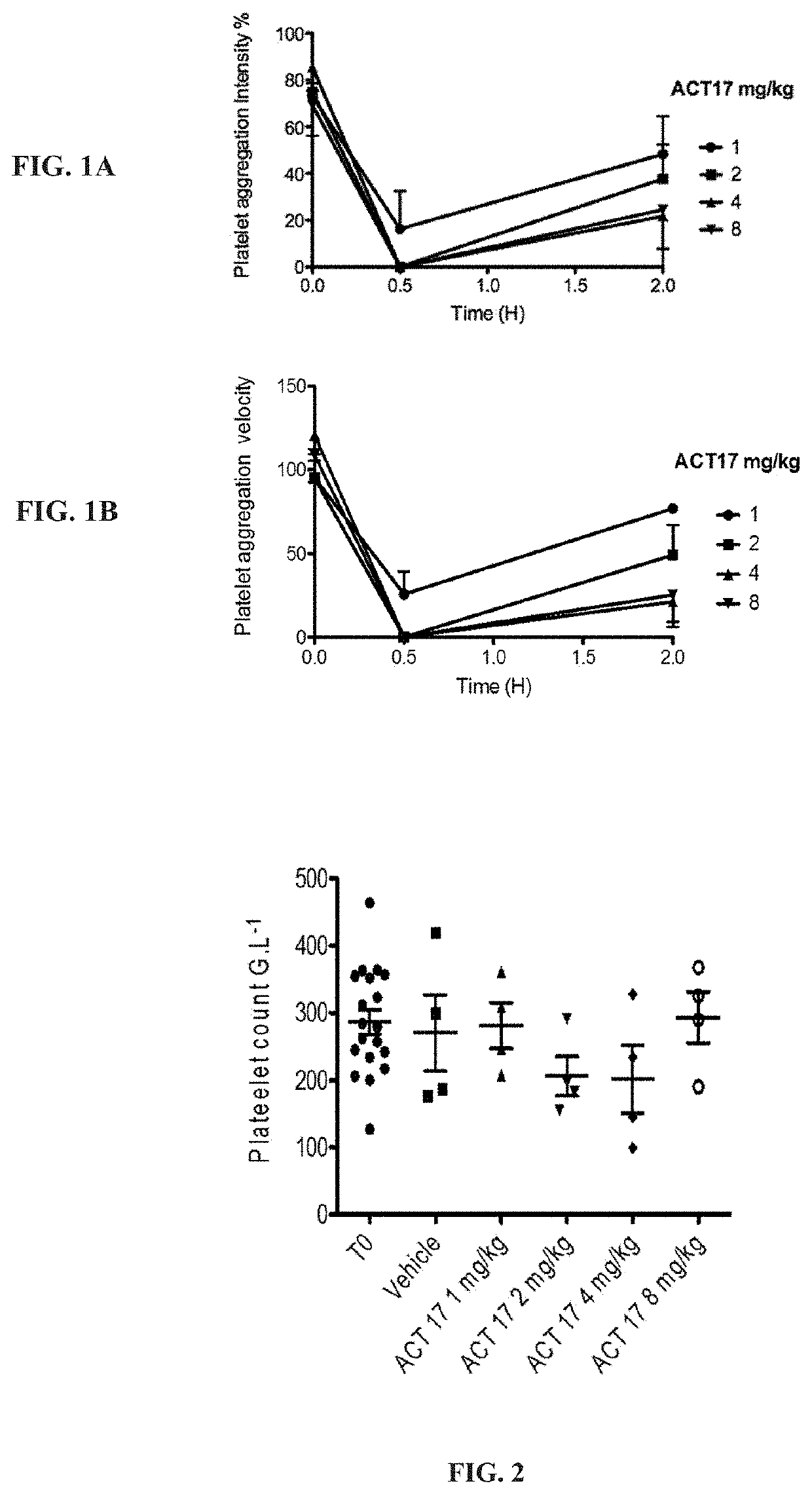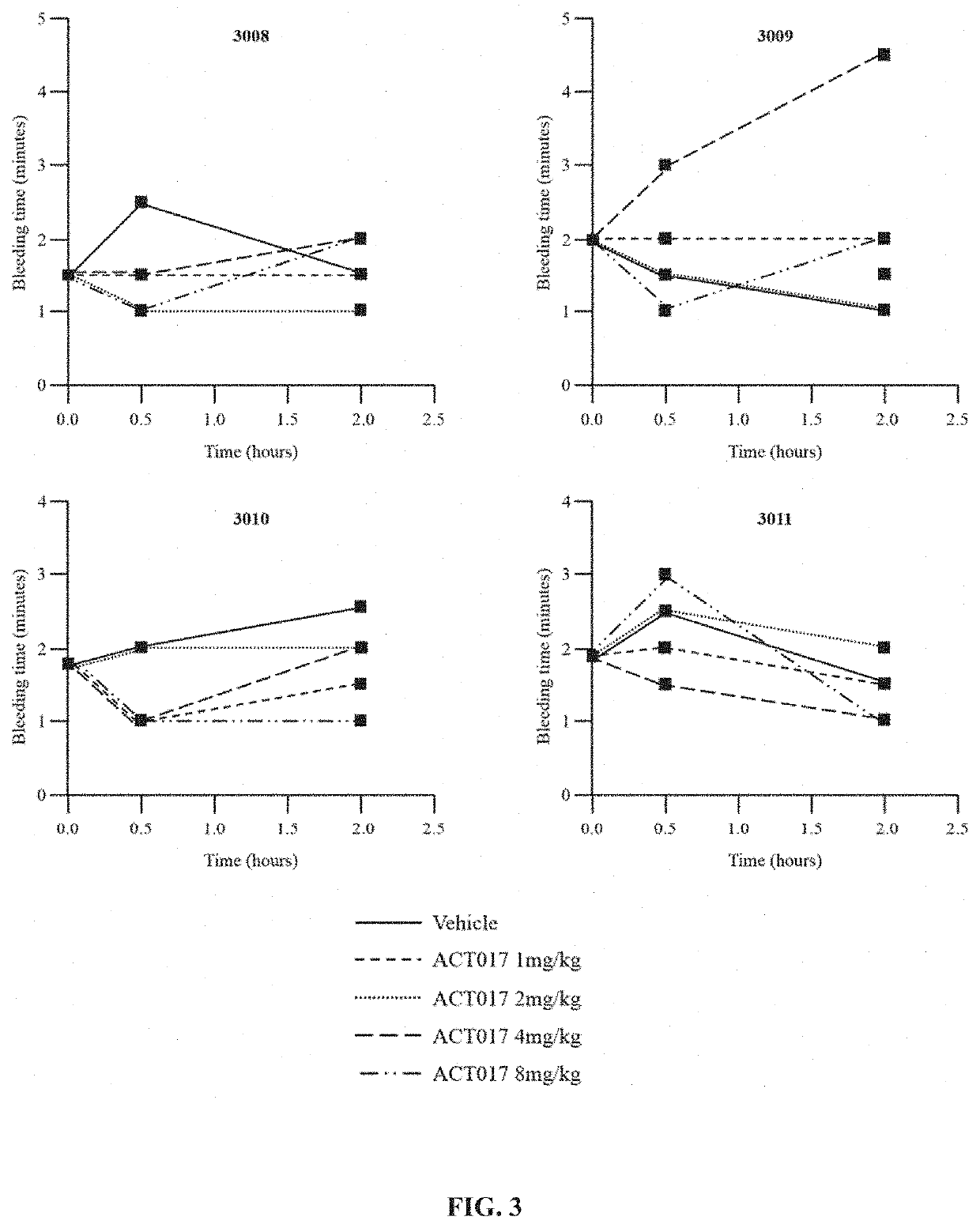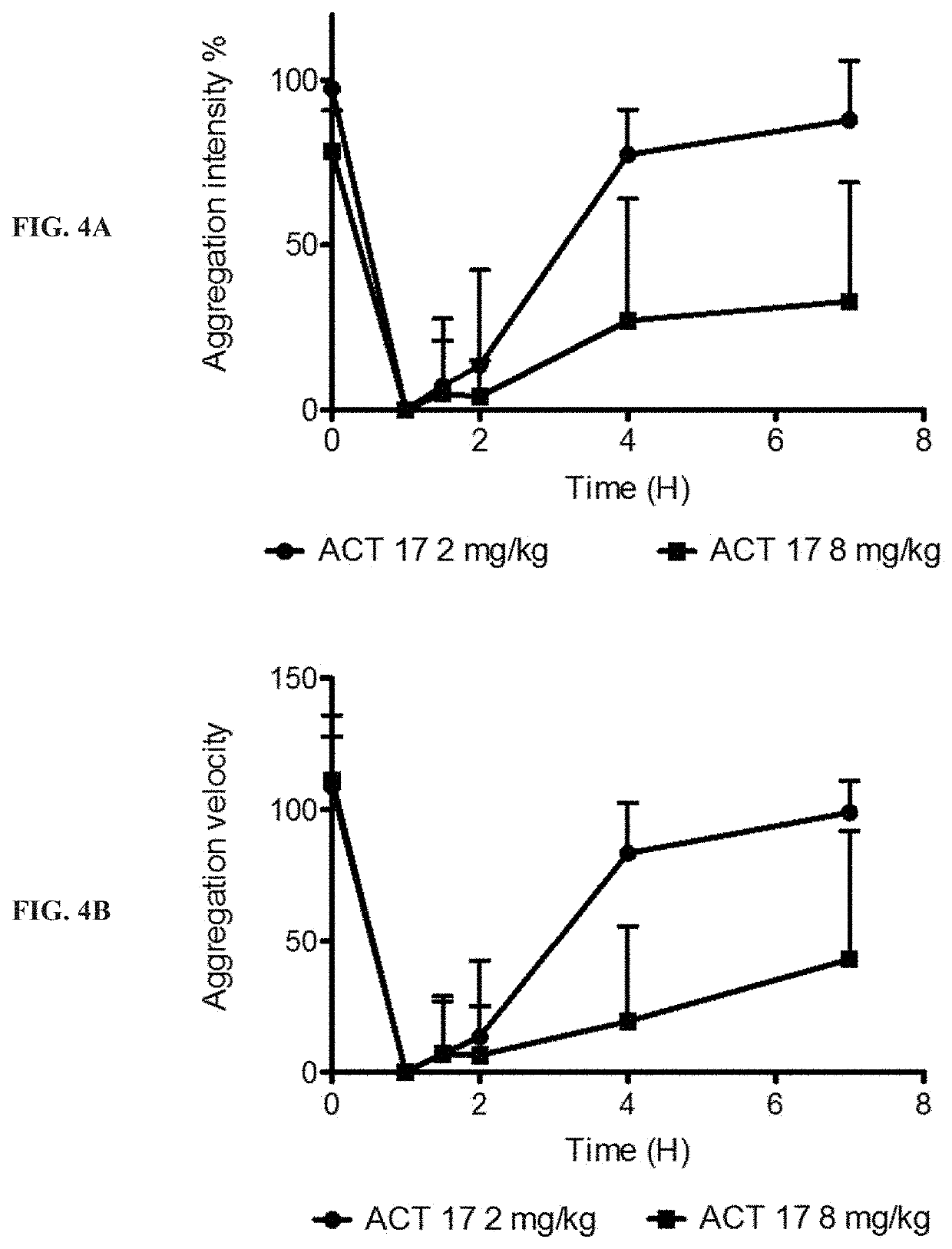Inhibition of platelet aggregation using Anti-human gpvi antibodies
a technology of human gpvi and anti-platelet aggregation, which is applied in the field of cardiovascular diseases, can solve the problems of not preventing morbidity/mortality for about 15% of patients in the next 6 months, and giving even less encouragement, so as to reduce the platelet count and prevent the death of about 15% of patients. , the effect of safe and prolonged
- Summary
- Abstract
- Description
- Claims
- Application Information
AI Technical Summary
Benefits of technology
Problems solved by technology
Method used
Image
Examples
example 1
Data in Non-Human Primates
Materials and Methods
Animals
[0378]28 cynomolgus monkeys free of any previous treatment were used in the study.
Treatment
[0379]First, increasing doses of ACT017 (1, 2, 4, 8 mg / kg) or its vehicle were intravenously administrated over 15 minutes (n=4-8). At time 30 minutes and 2 hours after administration, blood was collected.
[0380]In a second experiment, ACT017 was administered to animals, by bolus injection or infusion. Three treatment groups were included in the study: ACT017 administrated at 8 mg / kg by a bolus injection of 25 minutes (n=4), ACT017 administrated at 8 mg / kg by an infusion of 1 hour (n=8), ACT017 administrated at 2 mg / kg by a 15-min bolus injection followed by a 6 mg / kg infusion of 5 hours and 45 minutes (n=4). At different times, from 20 minutes to 24 hours after administration, blood was collected.
Analysis
[0381]Platelet aggregation: Platelet rich plasma (PRP) was obtained from monkeys after centrifugation (120×g; 15 min; 20° C.) and immediat...
example 2
ACTO17 Safety, Tolerability, Pharmacokinetic and Pharmacodynamic in Healthy Volunteers
Materials and Methods
[0394]The present study is a randomized, double blind, placebo-controlled ascending single dose study on the safety, tolerability, pharmacokinetics and pharmacodynamics of ACT017 in healthy volunteers.
Subjects
[0395]The subjects included in the study were healthy male or non-pregnant, non-breastfeeding female subject, aged between 30 and 60 year of age (inclusive) with a BMI≥18 kg / m2 and ≤30 kg / m2. A total of 48 subjects were enrolled in 6 ascending dose level cohorts with each cohort consisting of 8 subjects: 6 on active and 2 on placebo. Each cohort was divided into 2 sub-cohorts: one cohort dosed initially (1 active and 1 placebo) and the other cohort (5 active and 1 placebo) 48 hours thereafter.
[0396]On Day −1 of each dosing period, subjects were admitted to the research center and stay there until at least 48 hours' post-dose. A follow up visit was paid on Day 7. Subject we...
example 3
Epitopes Affinity of ACT017 on GPVI
[0419]The epitope of ACT017 on GPVI was previously identified by epitope mapping as being a conformational epitope comprising two regions on GPVI: amino acids 121-135 and amino acids 169-183 in SEQ ID NO: 13. In order to validate this epitope, a double mutant was constructed, comprising the following mutations: S125P, S126Q, G128R, Q133K, T136S, T171D, A172L and H174V and the affinity of this mutant for collagen and ACT017 was measured.
Materials and Methods
[0420]Soluble GPVI-Fc was produced as follows: a gene encoding the ectodomain of human GPVI from the first methionine to asparagine 269 fused to the human IgG1 Fc domain via the tripeptide GGR was synthesized after codon optimization. This gene was cloned into the pTT5 vector before being transfected into HEK 293-6E cells. Secreted GPVI-Fc was purified from the conditioned media of the cells by affinity chromatography using MAbselect matrix (GE Healthcare, 17519901) followed by a polishing chroma...
PUM
| Property | Measurement | Unit |
|---|---|---|
| Fraction | aaaaa | aaaaa |
| Fraction | aaaaa | aaaaa |
| Fraction | aaaaa | aaaaa |
Abstract
Description
Claims
Application Information
 Login to View More
Login to View More - R&D
- Intellectual Property
- Life Sciences
- Materials
- Tech Scout
- Unparalleled Data Quality
- Higher Quality Content
- 60% Fewer Hallucinations
Browse by: Latest US Patents, China's latest patents, Technical Efficacy Thesaurus, Application Domain, Technology Topic, Popular Technical Reports.
© 2025 PatSnap. All rights reserved.Legal|Privacy policy|Modern Slavery Act Transparency Statement|Sitemap|About US| Contact US: help@patsnap.com



